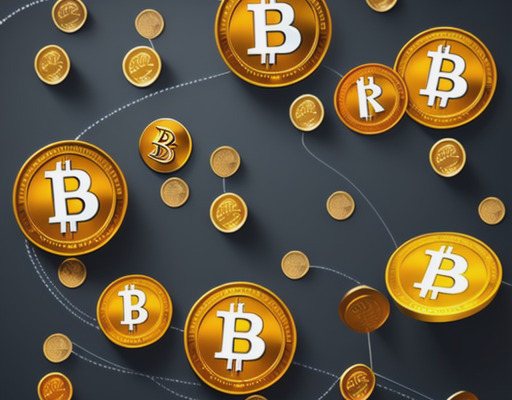In the ever-evolving world of blockchain technology, the introduction of BRC-20 tokens in the Bitcoin blockchain ecosystem has opened up new avenues for tokenization. Unlike ERC-20, BRC-20 offer a unique framework for creating and transferring fungible tokens, leveraging the power of the Ordinals protocol. In this article, we will explore the features, advantages, and potential drawbacks of BRC-20, shedding light on their role in expanding tokenization possibilities and their place within the broader context of the decentralized finance (DeFi) sector.
1. BRC-20 Tokens: A Novel Concept in the Bitcoin Ecosystem
BRC-20 represent a significant development within the Bitcoin blockchain ecosystem. While ERC-20 rely on smart contracts on the Ethereum blockchain, BRC-20 utilize the Ordinals protocol, providing a distinct approach to tokenization. The Ordinals protocol facilitates the creation and transfer of fungible tokens on the Bitcoin blockchain, enhancing liquidity and interoperability with Bitcoin-based applications.
2. Enhanced Liquidity and Interoperability
One of the key advantages of BRC-20 tokens is their enhanced liquidity and interoperability. By leveraging the Bitcoin blockchain, BRC-20 tap into the vast liquidity and existing infrastructure of the world’s largest cryptocurrency. This opens up new possibilities for seamless integration with Bitcoin-based applications, enabling users to leverage the benefits of tokenization within the Bitcoin ecosystem.
3. Aligning with Decentralization Principles
BRC-20 tokens align with the fundamental principles of decentralization that underpin the blockchain revolution. By enabling tokenization directly on the Bitcoin blockchain, BRC-20 empower individuals to exercise greater control over their assets and financial transactions. This aligns with the original vision of Satoshi Nakamoto, the pseudonymous creator of Bitcoin, who emphasized the importance of decentralization and disintermediation.
4. Mixed Opinions and Challenges
The introduction of BRC-20 tokens has generated mixed opinions within the blockchain community. Some enthusiasts perceive them as a remarkable innovation, expanding the capabilities of the Bitcoin blockchain and diversifying its use cases. However, others view BRC-20 as a deviation from Satoshi Nakamoto’s original vision, which prioritized the simplicity and security of Bitcoin’s design.
5. Limited Ecosystem and Potential High Transaction Fees
One of the notable challenges faced by BRC-20 is the limited ecosystem surrounding them. Compared to ERC-20 tokens on the Ethereum blockchain, BRC-20 are still in the early stages of adoption, resulting in a smaller network of projects and applications built around them. This limited ecosystem may impact the availability of services and liquidity for BRC-20.
6. Addressing Transaction Fee Concerns
Additionally, another concern associated with BRC-20 tokens is the potential for high transaction fees. As the Bitcoin blockchain is known for its scalability limitations, the increased usage of BRC-20 could result in higher transaction costs. This issue might impede the seamless transfer and use of BRC-20, especially for microtransactions or applications requiring frequent token transfers.
7. Absence of Smart Contracts
Unlike ERC-20 tokens, which benefit from the mature ecosystem and widespread usage of smart contracts on the Ethereum blockchain, BRC-20 tokens lack built-in smart contract functionality. This absence of smart contracts limits the flexibility and programmability of BRC-20 , hindering the development of complex decentralized applications (dApps) on the Bitcoin blockchain. However, it’s worth noting that this limitation aligns with the design philosophy of Bitcoin, which prioritizes security and simplicity over feature-richness.
8. The Future of BRC-20 Tokens
As the blockchain industry continues to evolve, the future of BRC-20 remains uncertain. Their significance in the DeFi sector and overall tokenization landscape will be determined over time as adoption grows and technological advancements address the existing challenges. It’s essential to closely monitor the developments surrounding BRC-20, as they have the potential to bridge the gap between the Bitcoin and tokenization ecosystems.
Conclusion: The Evolution of Tokenization
The introduction of BRC-20 tokens in the Bitcoin blockchain ecosystem expands the possibilities of tokenization. While BRC-20 differ from ERC-20 in their approach, they offer enhanced liquidity, interoperability with Bitcoin-based applications, and alignment with the principles of decentralization. However, challenges such as a limited ecosystem, potential high transaction fees, and the absence of smart contracts must be acknowledged. As the blockchain industry progresses, the future of BRC-20 will become clearer, and their role in the DeFi sector will be defined.
Frequently Asked Questions (FAQs)
Q1: What is the primary difference between BRC-20 tokens and ERC-20 tokens?
A1: The main difference lies in the underlying blockchain. BRC-20 operate on the Bitcoin blockchain, while ERC-20 tokens are on Ethereum. This impacts their features and capabilities.
Q2: Are BRC-20 tokens gaining popularity in the DeFi sector?
A2: While they are gaining attention, BRC-20 are still in the early stages of adoption in the DeFi sector. Their future depends on broader acceptance and technological advancements.
Q3: How do BRC-20 tokens contribute to decentralization?
A3: BRC-20 empower users to tokenize assets on the Bitcoin blockchain, aligning with the decentralized principles of blockchain technology.
Q4: What challenges does the limited ecosystem pose for BRC-20 tokens?
A4: A limited ecosystem means fewer projects and applications supporting BRC-20 , potentially affecting their liquidity and usability.
Q5: Can BRC-20 tokens overcome the transaction fee issue on the Bitcoin blockchain?
A5: Technological improvements may address this concern, but it remains a challenge for BRC-20 due to Bitcoin’s scalability limitations.
